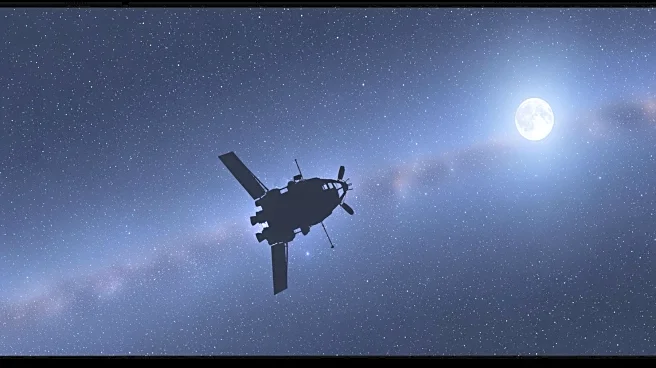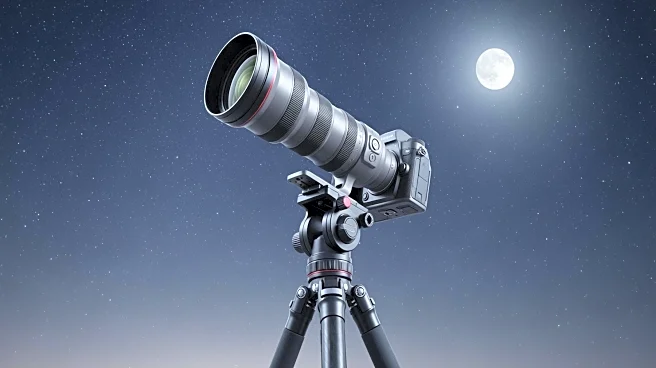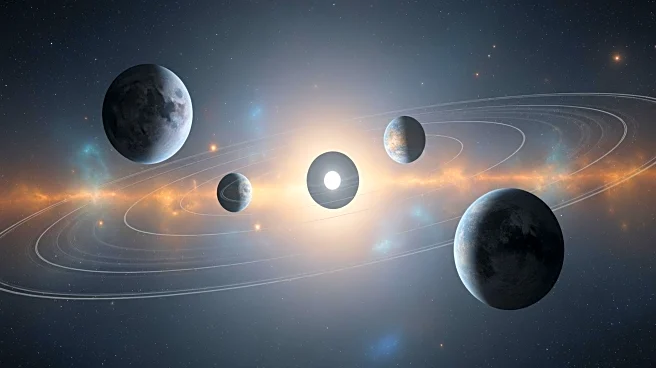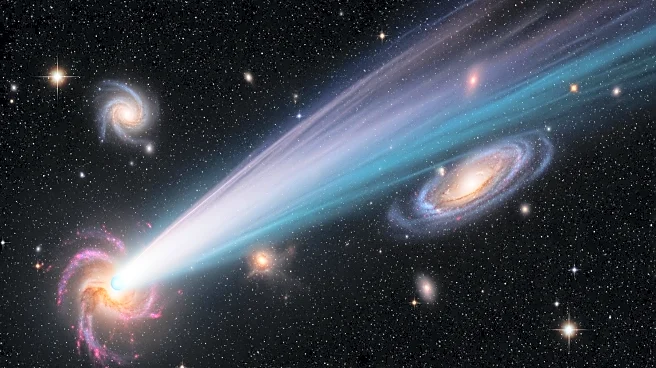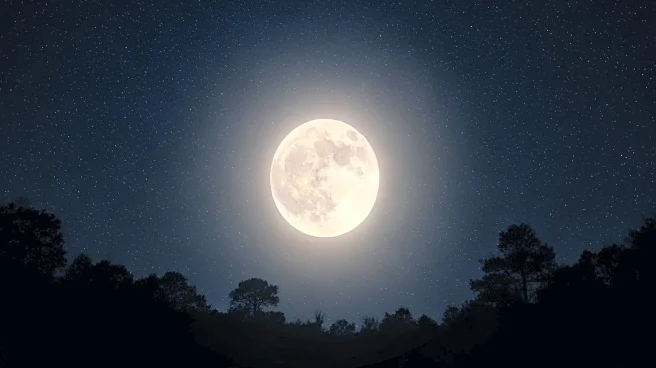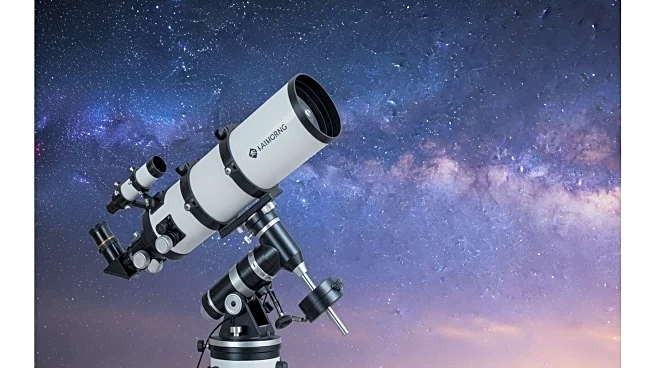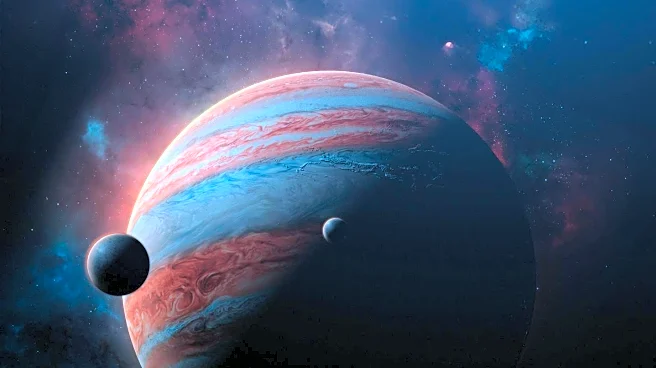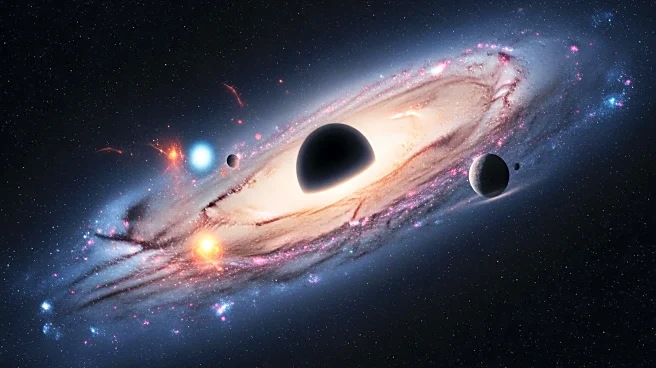What's Happening?
NASA has provided guidance on how to spot several legendary spacecraft in the night sky during October. The James Webb Space Telescope (JWST), launched in 2021, is currently positioned 5 degrees below
the Pleiades star and will move closer to Aldebaran in the Taurus constellation. Other notable spacecraft include NASA's Parker Solar Probe, located near Antares in the southwestern sky, and the Juno spacecraft orbiting Jupiter. Voyager 1, which entered interstellar space in 2012, can be found along the line connecting Rasalhague and Kappa Ophiuchi. These spacecraft have played significant roles in advancing our understanding of the cosmos.
Why It's Important?
The visibility of these spacecraft offers a unique opportunity for astronomy enthusiasts and the general public to connect with the achievements of space exploration. Observing these spacecraft can inspire interest in science and technology, fostering educational engagement and public support for space missions. The presence of these iconic instruments in the night sky serves as a reminder of the technological advancements and international collaborations that have expanded human knowledge of the universe. This visibility also underscores the importance of continued investment in space exploration to address fundamental questions about the cosmos.
What's Next?
As these spacecraft continue their missions, they will provide valuable data that could lead to new discoveries about the universe. The James Webb Space Telescope, in particular, is expected to unravel mysteries surrounding the creation and evolution of the cosmos. Future observations and findings from these missions may influence scientific theories and guide the development of new technologies. Public interest in these spacecraft may also drive support for upcoming space missions and initiatives, encouraging further exploration and innovation.
Beyond the Headlines
The visibility of these spacecraft highlights the cultural and educational impact of space exploration. It serves as a testament to human curiosity and the desire to explore beyond our planet. This event may inspire artistic and cultural expressions, reflecting the awe and wonder associated with the cosmos. Additionally, it emphasizes the collaborative nature of space exploration, showcasing the contributions of various countries and organizations in advancing scientific knowledge.
